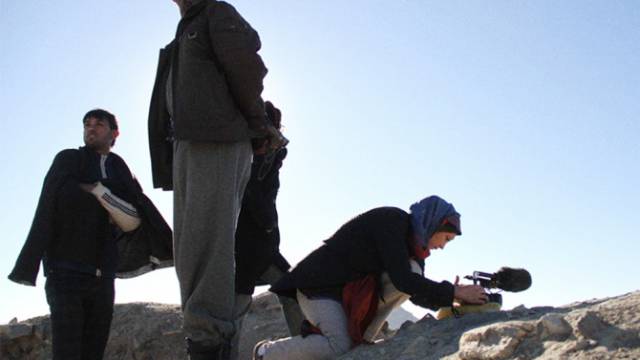
 At first glance Kirsten Johnson’s Cameraperson seems to be a film about choices. None of the images we see in the film would fit together if it wasn’t for the fact she chose to shoot them, and then assemble them into a single piece. And yet, there is something almost metaphysical in how she became involved in shooting projects that would resonate with other aspects of her personal life, or is that just the job of a good editor? These are some of the questions that rise from watching this affecting, expertly made visual poem, an autobiography of sorts, but one in which the subject tries to hide and let the world tell her story.
At first glance Kirsten Johnson’s Cameraperson seems to be a film about choices. None of the images we see in the film would fit together if it wasn’t for the fact she chose to shoot them, and then assemble them into a single piece. And yet, there is something almost metaphysical in how she became involved in shooting projects that would resonate with other aspects of her personal life, or is that just the job of a good editor? These are some of the questions that rise from watching this affecting, expertly made visual poem, an autobiography of sorts, but one in which the subject tries to hide and let the world tell her story.
Johnson is a renowned cinematographer who has specialized in nonfiction, having worked with directors like Laura Poitras and Michael Moore among others. In Cameraperson she uses outtakes from films like Citizenfour and Where to Invade Next to craft her own tale, making us wonder if she is by default claiming partial authorship of those works as well. Not that the film is by any means a self-congratulatory portfolio, in fact despite its precise tone it’s a work in which the fears and doubts of its creator pop up constantly. What Johnson’s film focuses on is in the very act of creating motion pictures and how this is similar to creating life.
Johnson’s lens captures life and death with childlike wonder and the respect that only comes with maturity. There are two striking scenes in which mortality and being alive become tangled in a terrifying dance. In one of them Johnson shoots a little boy playing with an ax, as he swings it left and right we can hear her sighs and gasps, but she never intervenes making us wonder if the cameraperson is akin to a standing guard doomed to keep their post come rain or come shine. Luckily the boy comes out unharmed, but we are left wondering what would Johnson’s reaction have been if he had hurt himself. Would it have made a difference if she left the camera rolling, abandoned her post and then discovered the outcome? In an equally disturbing scene, a nurse tries to revive a baby in a hospital so impoverished that perhaps life would be a bigger curse than death. As the camera captures the arduous process which involves constant spanking, shaking and wrapping in a warm blanket, the baby finally breathes, and so does Johnson.
Perhaps the most fascinating aspect of the film is the story about motherhood that Johnson has unearthed. She uses footage of her mother who was diagnosed with Alzheimer’s and died from the disease. One gets the sense that Johnson discovered the “plot” of the film while editing it; one of her loveliest subjects is an elderly Bosnian woman who serenely tells her life’s story as she bakes a loaf of bread. Johnson’s lens practically flirts with her as she opens up to talk about how stylish she was during her youth. This is a woman who lived through horrific moments and came out with a pragmatic wisdom that allowed her to survive, even if it involves a degree of denial. It’s no coincidence that Johnson cuts away from this woman to show her own mother looking for something she can no longer find within herself, it’s also no coincidence that the only time we see Johnson onscreen is when her camera catches her in her mother’s mirror. Is the mission of the camera to act as a mirror that reveals us to ourselves through the faces of others? Cameraperson makes the case for that, as it weaves horrors into threads of proverbial gold.